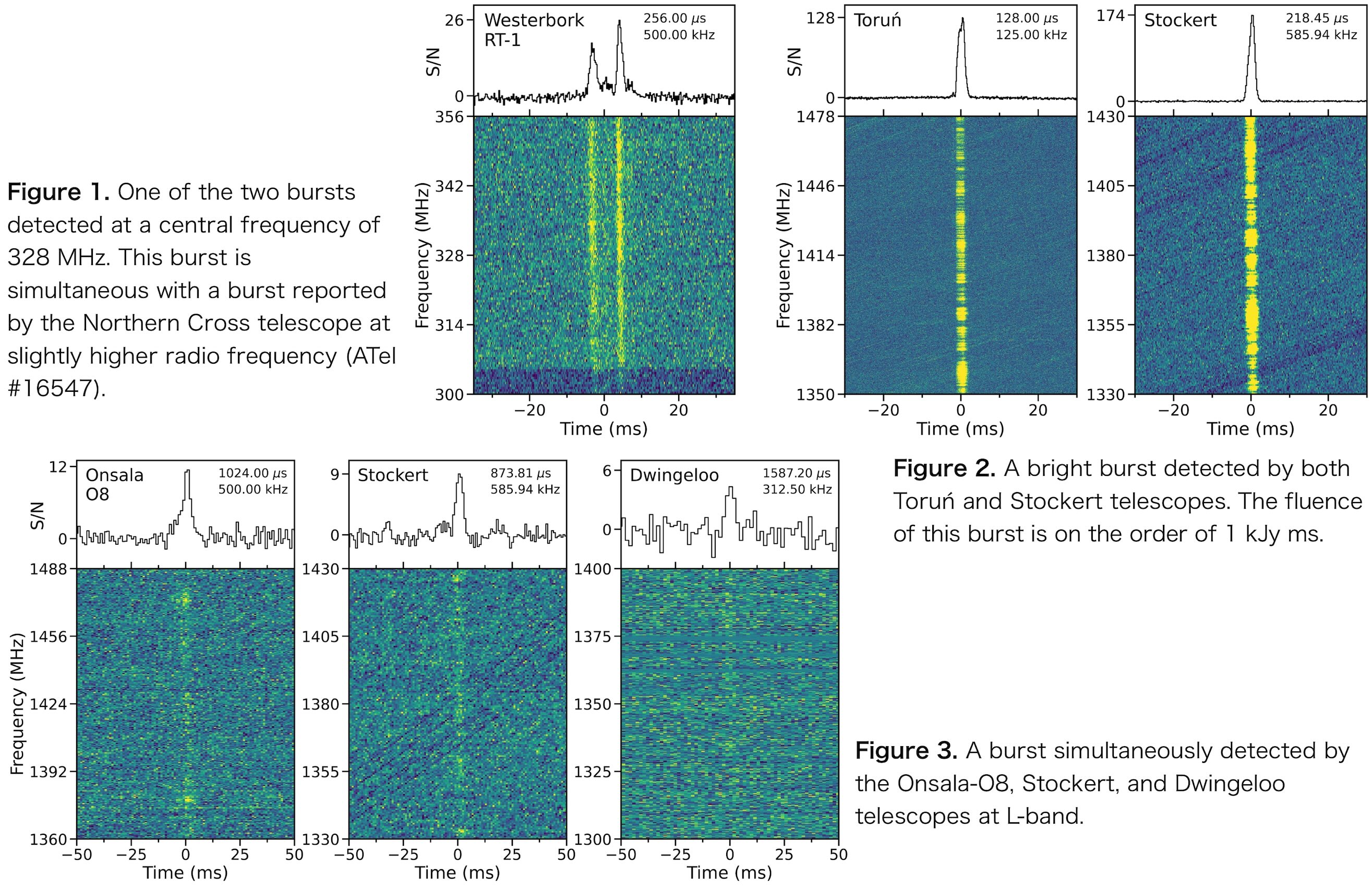 April 02, 2024
April 02, 2024
We report on our ongoing high-cadence monitoring campaign of the actively repeating fast radio burst source FRB 20240114 (ATel #16420). Since its discovery by CHIME/FRB in January 2024 (ATel #16420), we have been observing FRB 20240114 daily at P-band (0.33 GHz), L-band (1.4 GHz) and C-band (4.5 GHz) using a set of five small 25-32 meter European radio telescopes. The participating telescopes are the 25-m RT-1 Westerbork telescope (the Netherlands), the 25-m Stockert telescope (Germany), the 32-m Torun telescope (Poland), the 25-m Onsala O8 telescope (Sweden), and the 25-m Dwingeloo dish (the Netherlands). Whenever possible, the telescopes observe simultaneously at complementary wavelengths.
To date, we have accumulated over 1250 hours of exposure time between all five telescopes, which reduces to 600 hours of unique on-source time when accounting for simultaneous observations. So far, we have detected 111 unique bursts, of which 34 were detected by multiple telescopes at the same time, though never at multiple frequency bands simultaneously. All bursts have a fluence higher than our completeness threshold of about 10 Jy ms and the brightest bursts have a fluence on the order of 1 kJy ms. Two bursts were detected at P-band: we previously reported one of these (ATel #16432) and the second is simultaneous with a burst reported by the Northern Cross telescope at slightly higher radio frequency (ATel #16547). The other 109 bursts are all detected at L-band; we have not detected bursts at C-band.
Our campaign is still ongoing and we will continue to monitor the source for up to 11 hours per day, the full time it is above the local telescope horizons in Europe. We encourage simultaneous observations at other wavelengths, and we are open to collaborate on multi-wavelength studies by providing precise burst arrival times, fluences, and other information.
Ould-Boukattine et al. 2024, The Astronomer's Telegram, No. 16565.
